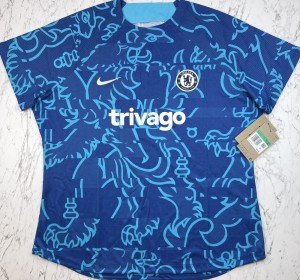A Global Fire Ignited by Grit and Glory
Women’s soccer isn’t just a game—it’s a revolution. From scrappy matches on muddy fields to packed stadiums roaring for stars like Lucy Bronze and Mia Hamm, the sport has fought its way from the shadows to the spotlight. It’s a story of defiance, from dodging bans in the 1920s to dominating World Cups and Olympics today.
With professional leagues like the NWSL thriving and global talents like Alexia Putellas lighting up Euro 2025, women’s soccer is a force that’s rewriting the rules of the beautiful game. Let’s dive into its wild history, the trailblazers who shaped it, the trophies that define it, and where it’s headed next.
The Early Days: Kicking Against the Odds
Women’s soccer didn’t start with glitzy stadiums or million-dollar deals. Back in the late 1800s, it was women like Nettie Honeyball in England, who founded the British Ladies’ Football Club in 1895, daring to play in front of curious crowds.
By the 1920s, teams like Dick, Kerr Ladies were pulling 50,000 fans to matches, raising money for charity during World War I. But the men running the show weren’t having it. In 1921, England’s FA banned women from their grounds, calling the game “unsuitable” for ladies. The ban lasted until 1970, forcing women to play on makeshift pitches, their passion burning despite the snubs.
Across the pond, things were quieter. In the U.S., women’s soccer barely existed until the 1970s, when Title IX (1972) forced schools to fund women’s sports equally. Suddenly, college teams sprouted, and by 1985, the U.S. women’s national team (USWNT) played its first match, losing 1-0 to Italy. It was a humble start, but the spark was lit.
The Rise of a Powerhouse
The 1990s changed everything. The USWNT, coached by Anson Dorrance and later Tony DiCicco, stormed the first FIFA Women’s World Cup in 1991, beating Norway 2-1. Stars like Mia Hamm, Michelle Akers, and Julie Foudy became household names, and the 1999 World Cup final—a 5-4 penalty shootout win over China in front of 90,000 fans at the Rose Bowl—put women’s soccer on the map. That Brandi Chastain celebration, ripping off her shirt, was a middle finger to anyone who doubted the sport’s pull.
The U.S. kept dominating, winning four World Cups (1991, 1999, 2015, 2019) and five Olympic golds (1996, 2004, 2008, 2012, 2024). They’ve medaled in every World Cup and Olympics except 2016 and 2023, both times losing to Sweden in penalty shootouts. With 58 and 61 US-based players in the 2019 and 2023 World Cups, respectively, the U.S. is a talent factory, fueled by college programs and Title IX’s legacy.
But it’s not just the U.S. Europe’s caught fire too. England’s Lionesses, led by players like Lucy Bronze, won Euro 2022 at Wembley, with Bronze’s semi-final goal against Sweden a highlight. Spain’s 2023 World Cup win, powered by Alexia Putellas, marked their first global title, while Norway, Germany, and Japan have also lifted the World Cup.
The AFC Women’s Asian Cup, founded in 1975, is the oldest continental tournament, and Morocco and Zambia’s 2024 Women’s Africa Cup of Nations wins show the game’s global reach.
Professional Leagues: Building a Foundation
The U.S. led the charge for pro leagues, but it wasn’t smooth. The Women’s United Soccer Association (WUSA, 2001–2003) had stars like Hamm and Germany’s Birgit Prinz but folded due to low attendance. Women’s Professional Soccer (WPS, 2009–2011) followed, only to collapse too.
Then came the National Women’s Soccer League (NWSL) in 2013, now the gold standard with 14 teams (16 by 2026, including Denver NWSL). Backed initially by the U.S., Canadian, and Mexican federations, it’s outlasted its predecessors, boasting players like Megan Rapinoe and Sophia Smith. In 2024, the USL Super League joined as a second Division I league, while the WPSL and USL W League feed talent from amateur ranks.
Globally, leagues are booming. England’s Women’s Super League (WSL), where Lucy Bronze now plays for Chelsea, is a powerhouse, with clubs like Arsenal and Manchester City drawing big crowds. France’s Division 1 Féminine and Spain’s Liga F, home to Bronze’s former club Barcelona, set the pace, while Mexico’s Liga MX Femenil smashed attendance records after launching in 2017. These leagues, often tied to men’s clubs like FC Barcelona Femení, show how far the game’s come.
Trailblazers: The Faces of the Game
Women’s soccer owes its fire to players who broke barriers. Lucy Bronze, England’s right-back, is a prime example. With five Champions Leagues (three with Lyon, two with Barcelona), nine league titles across England, France, and Spain, and a Euro 2022 medal, she’s redefined defending with her attacking runs and leadership. Her 2020 FIFA Best Women’s Player award was a first for a defender, and at 33, she’s still chasing glory with Chelsea and England at Euro 2025.
Then there’s Mia Hamm, whose 158 international goals stood as a record until 2013. Brazil’s Marta, with 118 goals and six FIFA Player of the Year awards, is a global icon, her flair inspiring a generation. Alexia Putellas, Spain’s two-time Ballon d’Or winner, is back from injury and tearing up Euro 2025, while Nigeria’s Asisat Oshoala and Zambia’s Barbra Banda are lighting up Africa’s scene. These women aren’t just players—they’re proof the game’s for everyone.
Major Competitions: The Global Stage
The FIFA Women’s World Cup, launched in 1991, is the pinnacle. The U.S. leads with four titles, followed by Germany (two), and Japan, Norway, and Spain (one each). The 2015 final drew 23 million U.S. viewers, outpacing the NBA Finals, and 2023’s tournament generated $570 million, though still just 9% of the men’s World Cup revenue. Brazil will host in 2027, the first South American edition, with 48 teams set for 2031.
The Olympics are huge too, with the USWNT’s five golds setting the standard. England’s Euro 2022 triumph and Spain’s 2023 World Cup win have fueled Europe’s rise, while the AFC Women’s Asian Cup and Africa’s Cup of Nations keep expanding. College soccer, especially in the U.S., is a breeding ground—UNC’s 2012 title was their 21st, and SCAD Savannah won the 2024 NAIA championship.
Challenges: The Fight’s Not Over
Despite the growth, women’s soccer faces hurdles. The NWSL’s 2022 report exposed systemic issues like player safety and workplace culture, prompting reforms. Salaries lag behind men’s—NWSL players earn far less than MLS stars—and media coverage, while improving, often plays second fiddle. In 2023, FIFA struggled to secure broadcast deals for the Women’s World Cup in Europe, with offers as low as 1% of men’s deals. In the U.S., the sport’s whiteness (70% of college players are white) and high costs exclude many, raising questions about equity.
The Future: A Game Without Limits
Women’s soccer is soaring. The NWSL’s expansion to 16 teams by 2026, with Denver’s new franchise and a planned stadium, signals ambition. The USL W League and WPSL are nurturing talents like the Armstrong sisters, while colleges produce stars like Trinity Rodman. Globally, transfers like Ajara Nchout to Lyon show the market’s heating up.
Lucy Bronze dreams of shaping the game post-retirement, maybe with the FA or UEFA. With Euro 2025 in full swing—Norway’s 4-3 thriller over Iceland and Switzerland’s late quarter-final clincher stealing headlines—the sport’s never been more alive. Participation is skyrocketing, with 384,000 girls playing high school soccer in the U.S. in 2023-24, third behind track and volleyball.
Women’s soccer is a fire that won’t quit. From the Dick, Kerr Ladies defying bans to Lucy Bronze’s Champions League hauls, it’s a sport built on courage. The USWNT’s four World Cups, England’s Euro glory, and Spain’s rise show its global reach. Leagues like the NWSL and WSL are thriving, but the fight for equal pay, coverage, and access continues.
As fans pack stadiums and stars like Marta and Putellas inspire the next generation, one thing’s clear: women’s soccer isn’t just here to stay—it’s here to lead.







